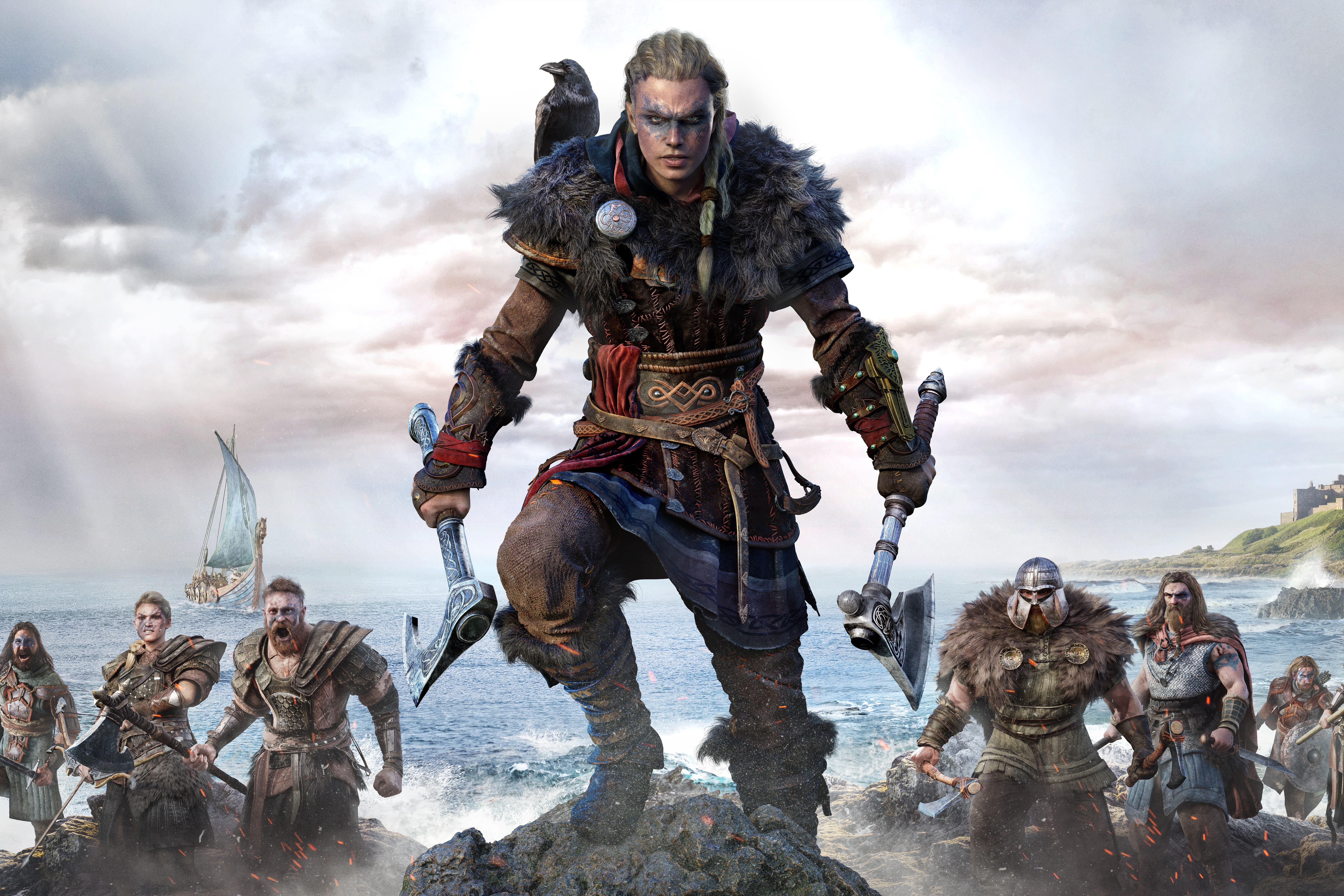When Assassin’s Creed Valhalla launches next week on both current and next-gen consoles (as well as PC, of course), fans of the series may notice something particular about the game’s soundtrack. Not only does it feature Norwegian folk and metal artist Einar Selvik (who some may know from History Channel’s Vikings), but it also brings together two composers of the series’ past.
Danish composer Jesper Kyd scored the first handful of Assassin’s Creed titles before moving on to other projects (like the Borderlands series, Darksiders II, and several other games), while American composer Sarah Schachner has handled the last few (as well as some Call of Duty titles, Anthem, and more after transitioning from the film and TV world). But Valhalla marks the first time the two of them have worked together, and the sheer size and scale of the Viking-themed soundtrack is all the better for it.
SPIN caught up with the two composers (and got our hands on a brand new track) to find out what went into bringing Valhalla and protagonist Eivor to life through song.
SPIN: Considering the size of Assassin’s Creed games and the rich history of Viking culture, what kind of inspiration did you personally use for the Valhalla soundtrack?
Sarah Schachner: Growing up, I spent many of my summers pillaging and plundering in my backyard on a full-sized Viking ship replica my family got from the Leif Erikson Society. It’s a crazy story — and my mom wrote a children’s book about it called Yo, Vikings! — but Eivor would have definitely been my hero growing up, so it was exciting to channel this character’s journey into music. While I was scoring the game, I read a great book called The Viking Wars. If I was ever feeling stuck, I could always count on that book to spark some new ideas. The concept for the track “The Sceptred Isle” actually came about after reading about the brutal raids of the Anglo-Saxon churches and how some of the Viking leaders ended up later converting to Christianity.
Jesper Kyd: I worked on creating an experience that felt authentic to the Viking time period while also using modern influences to create an exciting hybrid style of music. Being Danish, I was taught a lot about the Vikings growing up and this project was a great opportunity to get in touch with my Scandinavian roots. I also did a lot of additional research through books and articles and was especially fascinated reading about the early beginnings of the Vikings. History shows that there was about three centuries of extreme turmoil in Scandinavia before the farmers emerged as raiders. These events included volcanic eruptions that darkened the sun and lowered temperatures for years, killing huge parts of the population. It’s theorized that this was the inspiration for the Ragnarok legend, and when winter ended what emerged was a people obsessed with warfare. This is a simplified explanation, but the idea that the Viking lifestyle was somehow forged in fire — in one of the coldest environments in Europe — had a lasting impact on my inspiration for the music.
How do you walk the balance between truly being musically authentic to the Viking culture shown in the game while also making sure the soundtrack lives up to modern standards?
Schachner: I play orchestral and ethnic string instruments, so blending those sounds with synths and modern production is a fundamental part of my creative process. Blurring the lines between period and modern, reality and fantasy, and getting to fully embrace that fusion is what I enjoy the most about Assassin’s Creed. While I love drawing inspiration from past eras and capturing the spirit of something historic, I try to turn it into something new rather than create a literal representation of the past. I like knowing there are subtle historical nods sprinkled throughout the score, even if it’s not always obvious to the listener. One day I was procrastinating on YouTube and stumbled upon this ancient Scandinavian style of singing called “Kulning” which was used to call cattle and livestock. I was fascinated by it and worked it into a track later that day. In that case, the procrastination paid off.
Kyd: I added a lot of air in my recordings to give it the feel of a “folk” recording so it sounds like it was recorded outside and as though a group of Vikings came back from the ninth century and took over my studio. Mixing different music styles together is an essential part of my creative approach, and every instrument I perform goes through a lot of mixing and filtering. The lead instruments are from the Viking era, or at least they feel like they belong in a Viking narrative. A rule of thumb I used in the beginning was if the instrument could theoretically have been invented in the Viking age — such as a metal drum — then I could use it, even if the actual instrument hadn’t been invented yet. I then expanded on this idea by adding more “foreign” instruments to the mix such as guitars and the Eurorack modular synth. My instrument choices kept expanding as my musical discovery kept going deeper. When adding analog synths such as the Yamaha CS80 and Prophet 10, I played these through a 1950s Danelectro amp to give the performances the feel of something that has aged.
Is there anything else you’d want to tell people specifically about the soundtrack and how it was made?
Schachner: One of the things I was most excited about with this score was the remote trans-continental recording session in Scotland I managed to pull off at the beginning of the pandemic. I recorded source material with John Kenny, who plays a number of rare reconstructions of ancient Celtic war horns. The carnyx in particular has an otherworldly and eerie tone that fit perfectly with the mythical Norse realms of this game. Not only is John a world-renowned musician, but he’s an expert in ancient history, and it’s a joy to work with him.
Kyd: My overall philosophy on the score was to add soul, depth and atmosphere to the world of Valhalla. Viking-inspired music often has a darkness and a pulse to it since this is often how we think of them, but that was not what was needed for large parts of the game. We chose to explore different aspects of Viking society, and the moments for exploring the world needed something more uplifting. Finding and creating this more ethereal style required some experimentation, and I also took a lot of inspiration from the spirituality in the Viking culture for the score. Vikings had one of the most complex afterlife belief systems, and there was so much for me to tap into when digging deep into the history of the Vikings. I had a great time writing this score.





